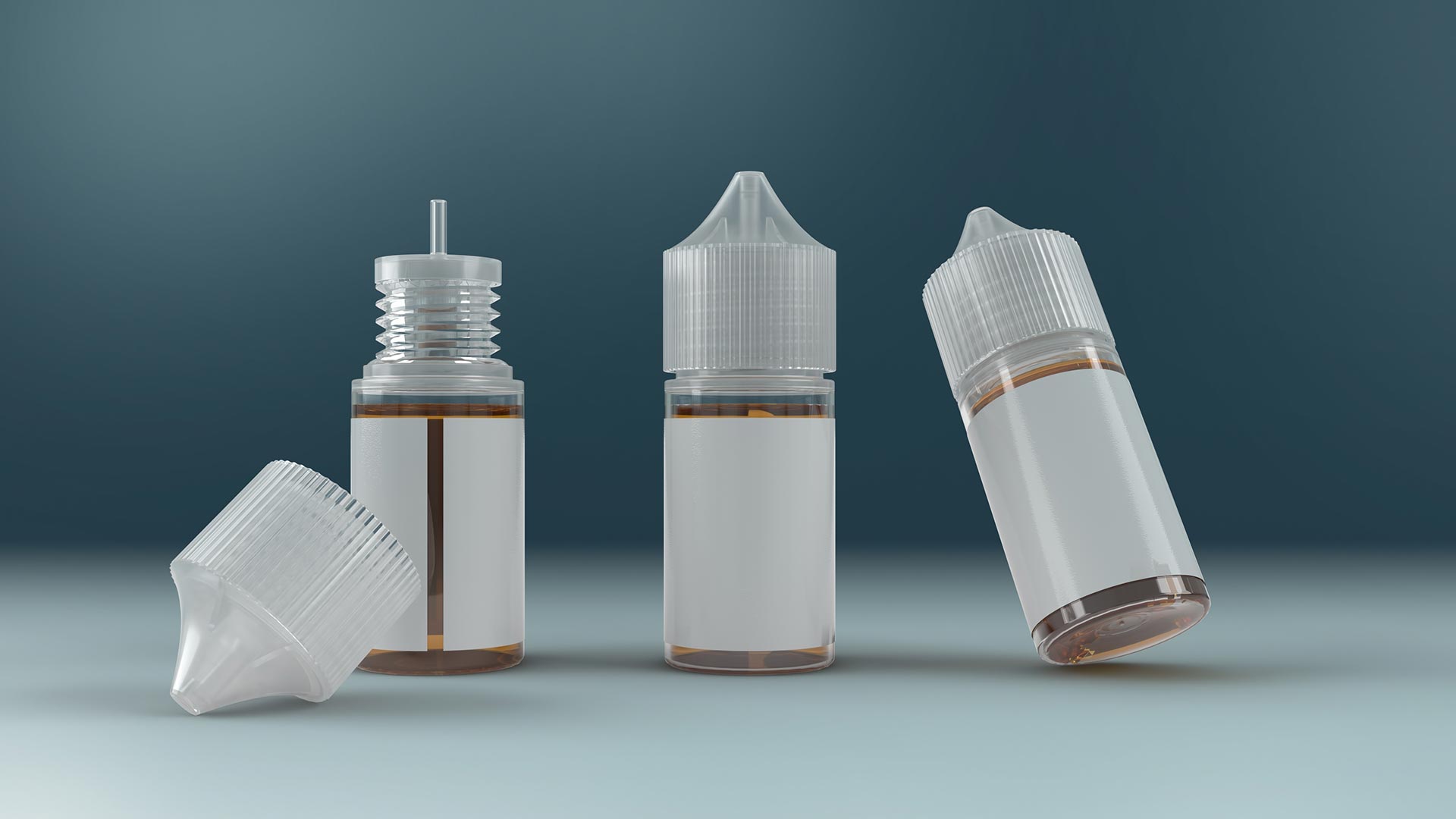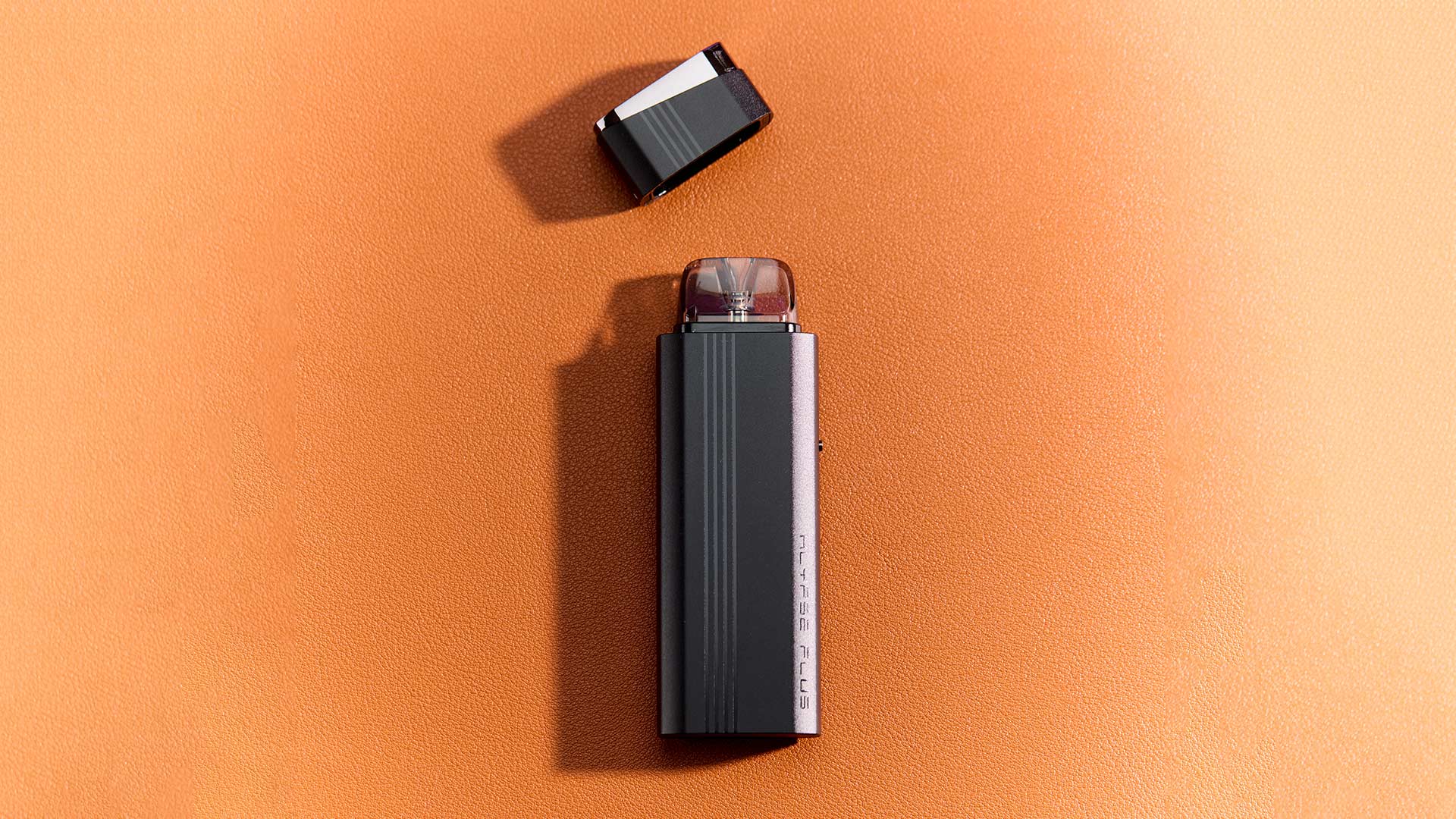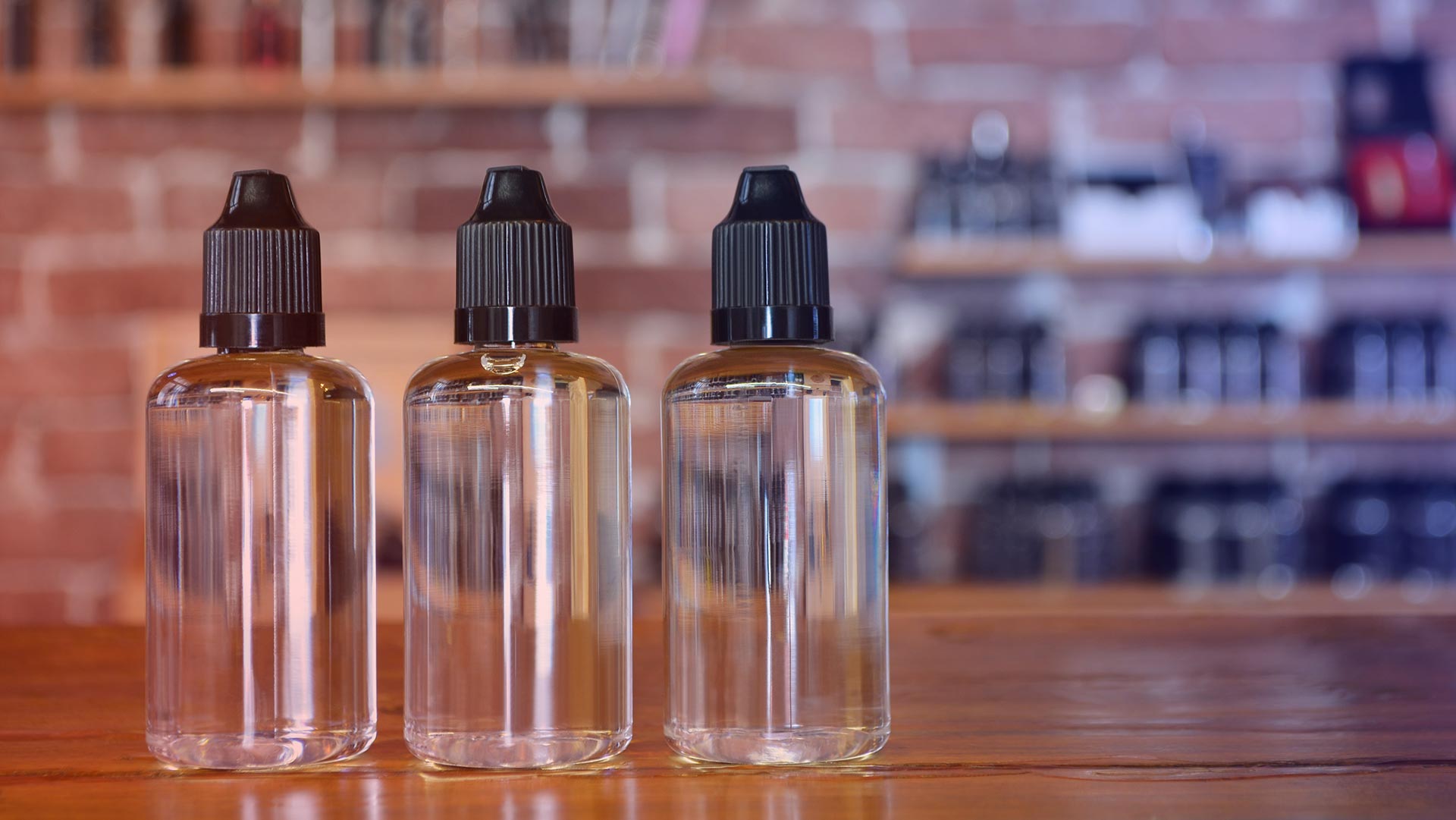The fact that you’re a health-conscious person probably had a great deal to do with your decision to switch from smoking to vaping and eliminate tobacco products from your life. The fact that you’re no longer inhaling cigarette smoke, though, doesn’t mean that you’re going to stop being vigilant about what you put into your body. That’s why you’re here looking for information about the ingredients in vape juice.
So, what is in vape juice? As you’re about to learn, e-liquid is actually a surprisingly simple product – especially compared to the complex and chemical-laden process of making cigarette tobacco. The majority of the e-liquids on the market consist of just four ingredients: propylene glycol, vegetable glycerin, nicotine and flavors. As you’re about to learn, all four of those vape juice ingredients are things that you most likely consume or use every day.
Let’s dive in and learn more about what you’re actually inhaling when you vape.
Propylene Glycol
Propylene glycol is a chemical found in a wide variety of products ranging from cosmetics and deodorants to medicines and drink mixes. PG is an excellent solvent, and it also helps to keep the ingredients in a solution mixed together.
Propylene glycol and vegetable glycerin (PG and VG) are the two ingredients that make up the majority of any e-liquid. You can’t just vape nicotine on its own because pure liquid nicotine is incredibly strong. Likewise, liquid food flavors are very concentrated in their original forms. Flavors and nicotine make up a very small portion of a bottle of vape juice, and those ingredients need to be added to a base that dilutes them to the desired strength. PG and VG do that job.
With more than 2.16 million metric tons produced annually, propylene glycol is one of the world’s most commonly used chemicals. It also has the Generally Regarded as Safe designation – as does vegetable glycerin – meaning that it is not known to be harmful when consumed orally.
PG has a number of useful properties. Because of those properties, it’s used in a wide variety of oral and topical products.
- PG attracts and retains water, so it’s used in shelf-stable foods to help prevent those foods from drying out. PG is also used as a moisturizing ingredient in products such as hair conditioners and hand sanitizers.
- PG is antimicrobial, so it’s often used in alcohol-free deodorant sticks.
- PG is an effective solvent and emulsifier, which makes it an excellent base for liquid food flavors, cosmetics and medications. If PG is in a product, it means that you can use the product without shaking the bottle repeatedly to recombine the ingredients. The fact that vape juice has PG in it is one of the reasons why you never need to shake the bottle when filling your pod or tank.
In addition to the products mentioned above, you’ll also find PG in eyedrops, bottled coffee drinks, frozen dairy desserts and whipped creams – just to name a few common items.
Effect on E-Liquid
The properties of an e-liquid depend in part on the ratio in which PG and VG are used.
- PG is a better solvent than VG, so an e-liquid containing more PG than VG will typically have bolder and more easily discernable flavors.
- PG creates a slightly scratchy sensation in the throat, so an e-liquid with more PG than VG will produce a stronger throat hit.
- PG is less viscous than VG, so an e-liquid with more PG than VG will produce small clouds that dissipate quickly. The fact that PG is thinner than VG also means that higher-PG e-liquids tend to work best in smaller vaping devices such as pod systems.
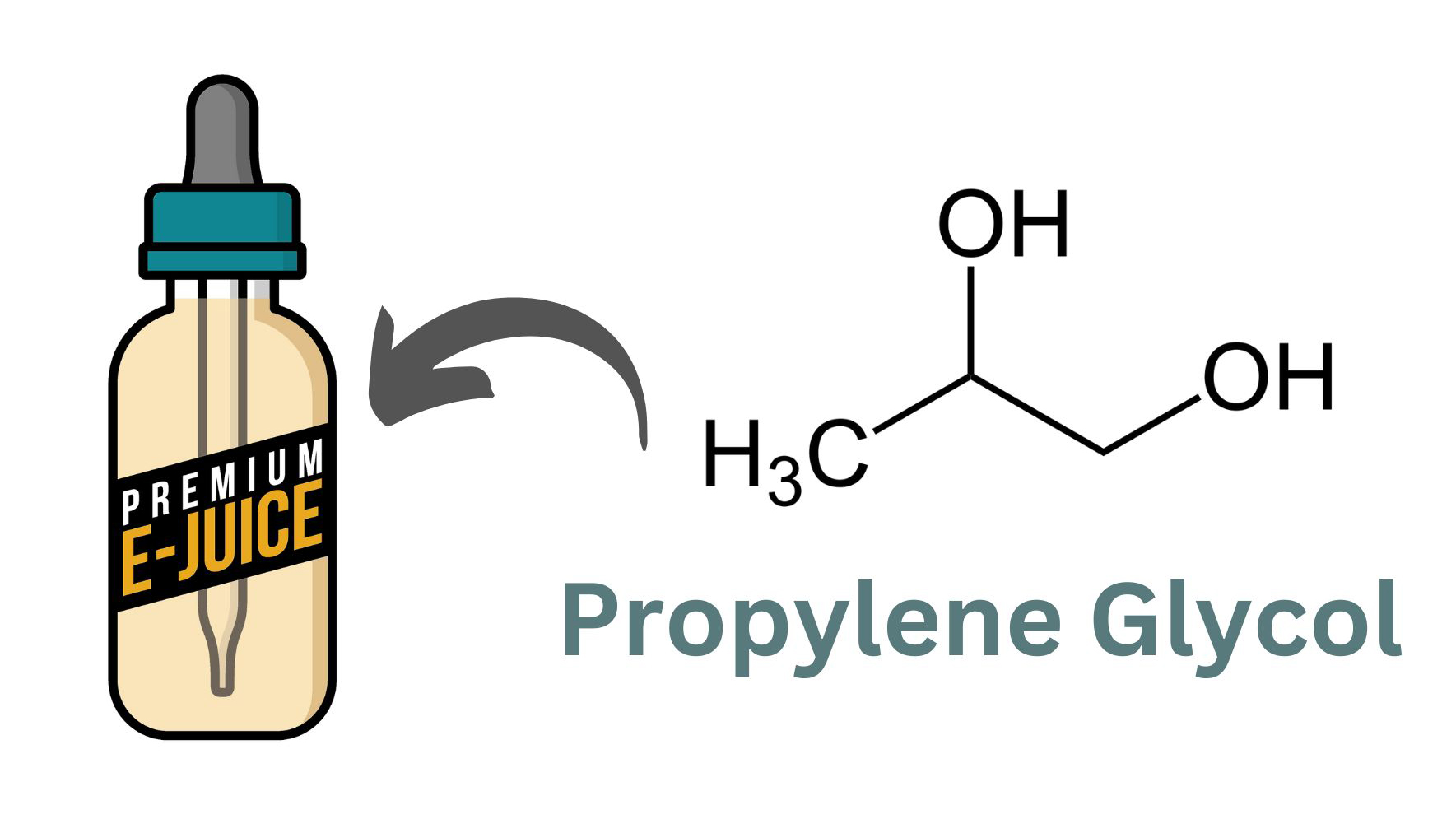
Vegetable Glycerin
Vegetable glycerin is a byproduct of soapmaking, and it is found in a wide variety of topical products like shampoos and moisturizers as well as in shelf-stable foods. VG is very effective at trapping and retaining moisture, which helps to prevent foods from going stale.
While propylene glycol is usually produced synthetically, vegetable glycerin is a natural chemical that’s actually quite common because it’s a byproduct of soapmaking. Some of the VG that’s created in the production of soap is actually added back into the soap for its moisturizing properties, and the rest is available for other uses. VG’s properties are actually somewhat similar to those of VG, so the two chemicals are used interchangeably in many applications.
- VG retains moisture even more effectively than PG, making it a common additive in products such as lotions, hair conditioners and eyedrops.
- VG is a solvent. Although it isn’t quite as effective as PG, it’s useful as an alternative to PG in medications, flavors and cosmetic products for people who are allergic or sensitive to PG.
- VG has a slightly sweet flavor, so it can be used as a sweetener in sugar-free or reduced-sugar foods.
Effect on E-Liquid
In the beginning of the vaping industry, all commercial e-liquids used only PG as a base. Companies began to add VG later, after it was discovered that the slightly thicker liquid produced some desirable effects. Today, most vape juices use at least 50 percent VG, and high-VG blends are also popular.
- Because VG is slightly sweet, it can help to enhance the sweetness of an e-liquid. However, the sweetness of VG can also tend to muddle the individual notes in vape juices with more complex flavor profiles.
- VG is very smooth when it’s inhaled, so an e-liquid with more VG than PG will produce a milder throat hit.
- VG is thicker than PG, so an e-liquid with more VG than VG will tend to produce bigger clouds that hover in the air longer before dissipating. The coil in a powerful sub-ohm vape tank will usually have large wick openings to accommodate thick high-VG e-liquids.
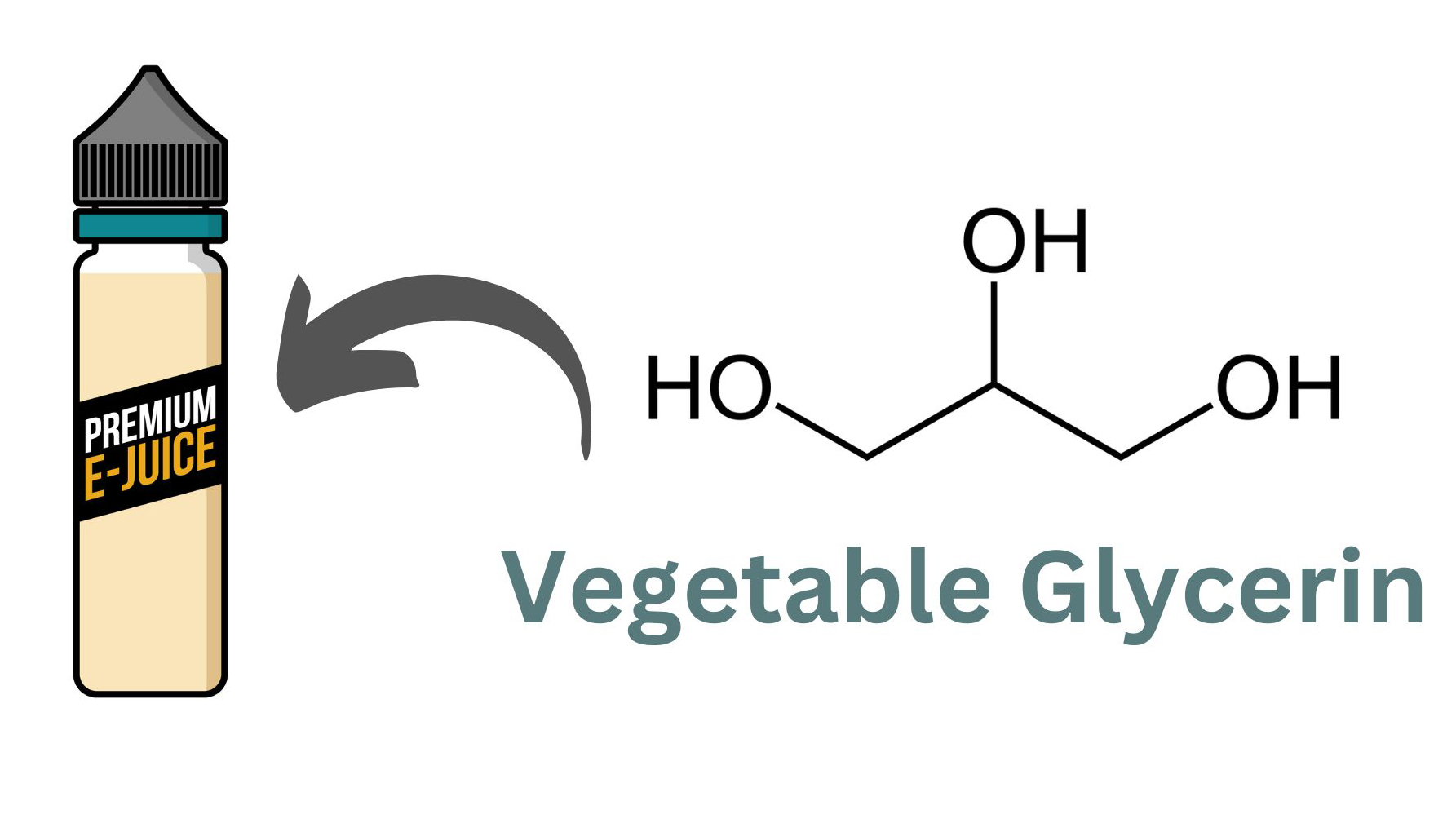
Nicotine
Since vaping is intended as a replacement for smoking, most e-liquids contain nicotine. Vape juice typically uses pharmaceutical-grade nicotine extracted from tobacco leaves, although lab-created synthetic nicotine is becoming more common.
Nicotine is, of course, the primary active vape juice ingredient. Although there is a surprising level of demand for nicotine-free vapes, most people use vape juice with nicotine because they want to replace the nicotine in cigarettes. E-liquid comes in a wide range of nicotine strengths, with the most common strengths ranging from 0.3 percent (3 mg/ml) to 2 percent (20 mg/ml) by volume. In some regions, higher strengths are also available.
Until relatively recently, most of the e-liquid used in e-liquid was extracted naturally from tobacco leaves using a basic solvent such as ammonia. Using a solvent that increases the pH of the solution also changes the nicotine from a salt – which is what nicotine is in its original state – to a free base. Freebase nicotine was the most common form of nicotine used for e-liquids and nicotine replacement products.
Today, though, two additional forms of nicotine are also used as vape juice ingredients.
- Nicotine Salt: Nicotine salt e-liquid arose out of a need to create vape juices with higher nicotine strengths for smaller devices such as disposable vapes. A smaller vaping device needs to deliver more nicotine per puff in order to provide the same satisfaction as a tobacco cigarette. Freebase nicotine is alkaline, though, and it tends to irritate the throat at high nicotine strengths. Nicotine salt e-liquid contains a mild acid that causes the nicotine to revert to its original salt form and reduces the alkalinity of the e-liquid, making it smoother. Nicotine salt is usually the ideal type of nicotine for smaller vaping devices.
- Synthetic Nicotine: The independent vaping industry has always gone to great lengths to separate itself from the tobacco industry. Until recently, though, it’s been difficult to achieve the goal of completely separating vaping from tobacco because all e-liquids used naturally extracted nicotine. Although synthetic nicotine was theoretically possible to create, the available methods for creating tobacco-free nicotine were too expensive to implement on a commercial scale. By the early 2020s, though, the demand for synthetic nicotine had become so strong that laboratories had a great deal of incentive to develop more affordable methods. Today, much of the vape juice sold throughout the world uses synthetic nicotine with no connection whatsoever to tobacco. Tobacco-free nicotine is available in both freebase and salt forms.
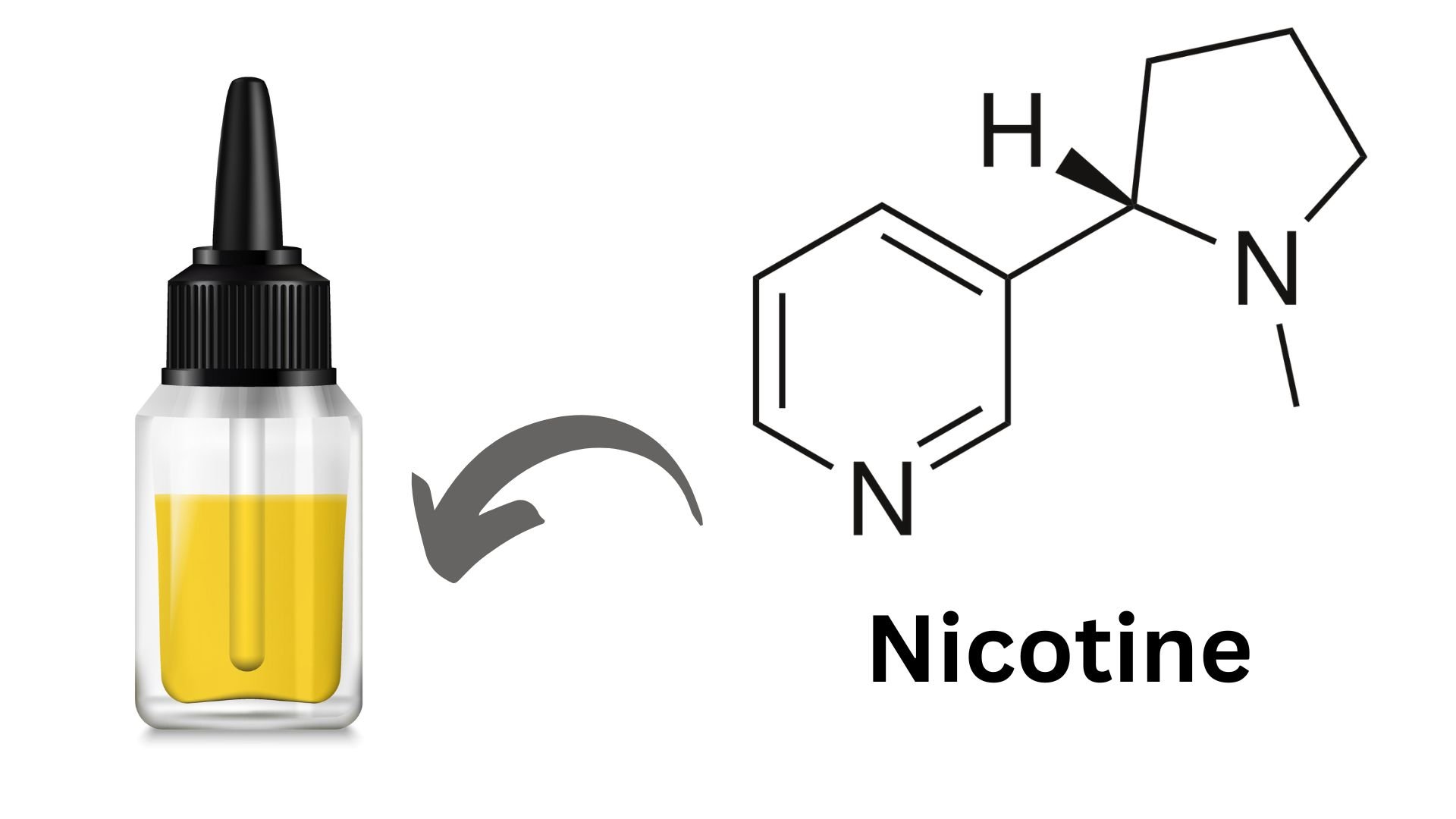
Flavors
Vape juice uses the same food-grade natural and artificial flavors that are used in snacks, candies, beverages and other edible items.
The final ingredient that makes vape juice what it is – and separates the various products from one another – is a combination of natural and artificial food-grade flavors. E-liquid makers use the same flavoring agents used by companies in the food, snack, candy and beverage industries, and that’s one of the reasons why a great vape juice can taste almost exactly the same as a popular candy or drink. If an e-liquid maker can manage to crack the code of a well-known product and come up with a similar combination of flavors, the resulting product can taste almost exactly the same as the actual food.
E-liquids come in a variety of different flavors that’s virtually endless. You can find vape juices that taste like candy, baked goods, desserts, cereals, dairy products, fruits, beverages and more. Of course, you can also find tobacco and menthol e-liquids that attempt to provide a satisfying flavor similar to that of a cigarette.
In addition to flavoring agents, it’s also common for e-liquids to include sweetening agents. People love sweet flavors, and research has shown that most of the people who switch to vaping and quit smoking successfully do so with sweet e-liquids rather than ones that attempt to recreate the flavor of cigarettes. The most common e-liquid sweetener is sucralose, which can make a vape juice taste almost as if it’s sweetened with real sugar. It’s wise to use an e-liquid that keeps the sucralose level to a minimum, though, because sucralose can cause vape coils to burn out more quickly.
Hemok Wang
Hey! Hemok here, a vaping enthusiast with a passion for helping people quit smoking. My uncle was diagnosed with lung cancer a few years ago after smoking for more than 40 years. I do understand that quitting smoking isn't only a physical issue but also a mental one. It's just hard to go "cold turkey". I believe that vaping is one of the best solutions to make the switch only if you do it in the right way, and that's why I am here to share :)

